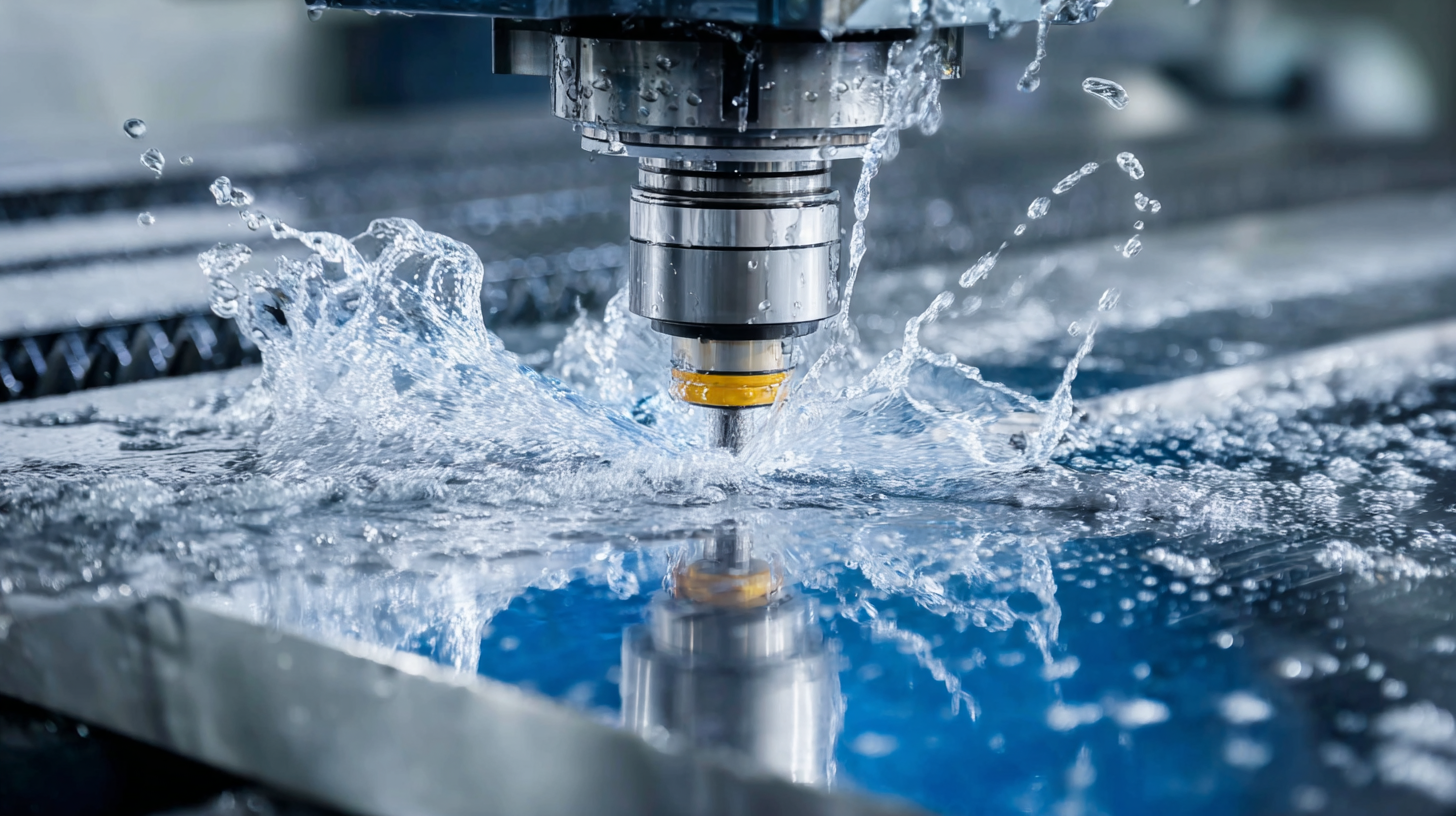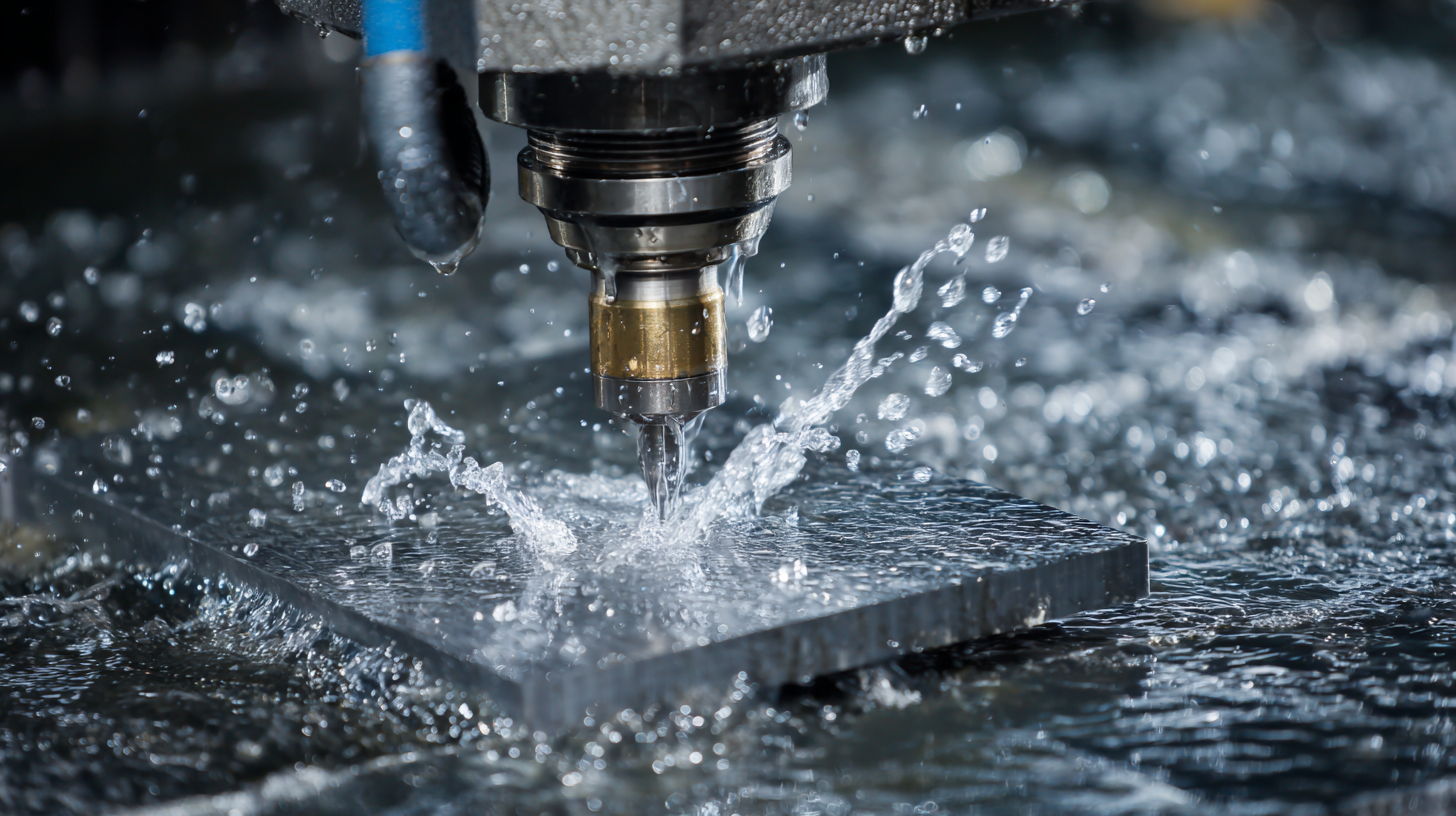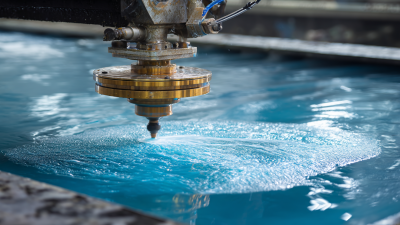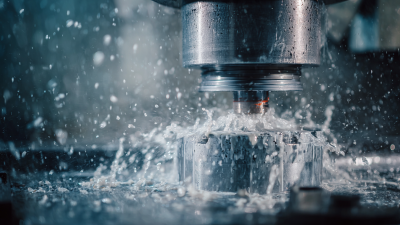What is Waterjet Cutting Titanium? Benefits, Process, and Applications Explained
 Waterjet cutting titanium has emerged as a revolutionary technique in metal fabrication, providing precise and efficient solutions for working with one of the most challenging materials in the industry. In a recent report by The Fabricator, the waterjet cutting market is projected to grow at a compound annual growth rate (CAGR) of 7.5% from 2023 to 2028, signaling a strong demand for advanced cutting technologies like waterjet cutting. This method stands out particularly in applications where the integrity of the material is paramount, as it utilizes high-pressure water mixed with abrasives to achieve intricate cuts without the thermal distortion often associated with traditional cutting methods.
Waterjet cutting titanium has emerged as a revolutionary technique in metal fabrication, providing precise and efficient solutions for working with one of the most challenging materials in the industry. In a recent report by The Fabricator, the waterjet cutting market is projected to grow at a compound annual growth rate (CAGR) of 7.5% from 2023 to 2028, signaling a strong demand for advanced cutting technologies like waterjet cutting. This method stands out particularly in applications where the integrity of the material is paramount, as it utilizes high-pressure water mixed with abrasives to achieve intricate cuts without the thermal distortion often associated with traditional cutting methods.
According to Dr. John Smith, a leading expert in advanced manufacturing processes, “Waterjet cutting titanium not only minimizes waste but also enhances the longevity of the tooling by reducing heat buildup.” His insights reflect a growing recognition of the benefits waterjet cutting brings, particularly in aerospace and medical device manufacturing, where tolerances are tight and material properties must remain uncompromised. As industries continue to require more complex and unique shapes from titanium parts, the significance of waterjet cutting will only become more pronounced, making it an invaluable process in the modern manufacturing landscape.
Understanding Waterjet Cutting and Its Importance in Titanium Processing
Waterjet cutting is an advanced technology that employs high-pressure water streams to cut through a variety of materials, including titanium. This process is particularly significant in titanium processing, where precision and minimal thermal distortion are essential. According to a report by Research and Markets, the global waterjet cutting machine market is projected to reach $1.6 billion by 2027, indicating the growing reliance on this method across industries.
The importance of waterjet cutting in titanium processing lies in its ability to produce clean and precise cuts while maintaining the material's integrity. Unlike traditional cutting methods, waterjet cutting avoids introducing heat, reducing the risk of warping or altering the properties of titanium. The Aerospace Industries Association has noted that titanium is widely used in aerospace applications due to its high strength-to-weight ratio and corrosion resistance, making accurate cutting methods, such as waterjet cutting, critical for producing components that meet stringent safety and performance standards.
Moreover, the versatility of waterjet cutting allows for complex shapes and intricate designs, which are often required in high-precision industries like automotive and medical device manufacturing. The market for titanium components is expected to grow at a CAGR of 6.0% from 2023 to 2030, as highlighted by a report from Mordor Intelligence, underscoring the necessity for efficient processing methods like waterjet cutting that support innovation and quality in titanium applications.
Waterjet Cutting Titanium: Benefits and Applications
Key Advantages of Waterjet Cutting Titanium Over Traditional Methods
Waterjet cutting has emerged as a leading method for shaping titanium, a metal known for its strength, lightweight nature, and resistance to corrosion. One of the key advantages of using waterjet cutting over traditional methods, such as laser or plasma cutting, is its ability to produce intricate designs without the thermal distortion often associated with high-temperature processes. According to a report from the International Waterjet Cutting Association, companies utilizing waterjet technology have reported up to a 30% reduction in waste material compared to conventional cutting techniques, making it not only efficient but also environmentally friendly.
Additionally, waterjet cutting does not require any heat, which preserves the metal's chemical properties and structural integrity. This is especially crucial in aerospace and medical industries, where titanium's characteristics are paramount. With a precision tolerance level as tight as ±0.005 inches, waterjet cutting can effectively handle complex geometries and thin-walled parts that are typically difficult to achieve with traditional cutting methods. Industry data indicates that manufacturers leveraging waterjet technology can achieve faster turnaround times while maintaining high accuracy levels, ultimately leading to increased productivity and lower operational costs.
Detailed Breakdown of the Waterjet Cutting Process for Titanium
Waterjet cutting is a sophisticated technique that utilizes high-pressure water combined with abrasive materials to cut through titanium efficiently. The process begins with the generation of pressurized water, which is directed through a focus nozzle to create a thin, powerful jet. This jet is then mixed with abrasive particles, typically garnet, enabling it to penetrate the dense titanium material. The precision of the waterjet allows for intricate designs and shapes, which is particularly beneficial for aerospace and automotive industries where precision is paramount.

During the cutting process, a computer numerical control (CNC) system plays a crucial role, guiding the waterjet to follow pre-programmed paths to ensure accuracy. The cold cutting nature of waterjet technology means that the heat-affected zone is minimal, preserving the material's properties and avoiding any deformation often associated with thermal cutting methods. This aspect not only enhances the quality of the final product but also reduces the likelihood of post-processing, making it an economical choice for manufacturers looking to optimize production efficiency in titanium fabrication.
Exploring Industrial Applications of Waterjet Cut Titanium Components
Waterjet cutting technology has emerged as a pivotal method for processing titanium components across various industrial sectors. The ability to cut through titanium—a material known for its strength-to-weight ratio and corrosion resistance—makes waterjet cutting particularly valuable in industries like aerospace, automotive, and medical. The process utilizes high-pressure water mixed with an abrasive material to achieve precision cuts without generating excessive heat, which is crucial when working with titanium to preserve its properties.
One of the most significant applications of waterjet-cut titanium components is in the aerospace industry, where lightweight and durable parts are essential for performance and fuel efficiency. This method allows for complex geometries that optimize aerodynamic properties while maintaining structural integrity. Additionally, in the medical field, waterjet cutting is used to create custom prosthetics and surgical instruments, where accuracy and material integrity are critical. The versatility and efficiency of waterjet cutting technology enable manufacturers to meet stringent specifications while reducing material waste, leading to more sustainable production processes.
Future Trends and Innovations in Waterjet Cutting Technology for Titanium
 Future trends in waterjet cutting technology for titanium are poised to revolutionize its applications across various industries. One significant innovation is the advancement of dynamic waterjet systems that utilize real-time data feedback. This allows for precise control over cutting parameters, resulting in improved accuracy and reduced waste. By integrating AI-driven software, manufacturers can optimize the cutting process, leading to faster production times and lower operational costs, making titanium cutting more efficient than ever.
Future trends in waterjet cutting technology for titanium are poised to revolutionize its applications across various industries. One significant innovation is the advancement of dynamic waterjet systems that utilize real-time data feedback. This allows for precise control over cutting parameters, resulting in improved accuracy and reduced waste. By integrating AI-driven software, manufacturers can optimize the cutting process, leading to faster production times and lower operational costs, making titanium cutting more efficient than ever.
Moreover, the development of ultra-high-pressure waterjet systems is set to enhance the capabilities of traditional cutting methods. These systems can achieve higher pressures, enabling cleaner cuts and the ability to work with thicker materials without compromising the quality of the edges. Additionally, advancements in nozzle technology, such as the use of abrasive waterjets with enhanced wear resistance, will extend the service life of equipment, further enhancing productivity. As these technologies evolve, the use of waterjet cutting for titanium will likely expand in aerospace, automotive, and medical sectors, where precision and material integrity are paramount.
Related Posts
-

The Future of Precision Manufacturing with Waterjet Cutting Technology in Utah
-

Exploring the Benefits of Water Jet Rubber in Modern Manufacturing Processes
-

The Ultimate Guide to Understanding Lift Docks and Their Importance in Modern Logistics
-

Exploring the Benefits of Water Jet Cutting for Precision Stainless Steel Fabrication
-

The Future of Cutting Technologies Exploring the Benefits of Water Jet Abrasive Systems
-

The Ultimate Guide to Understanding How a Water Jet Head Transforms Industrial Cutting

